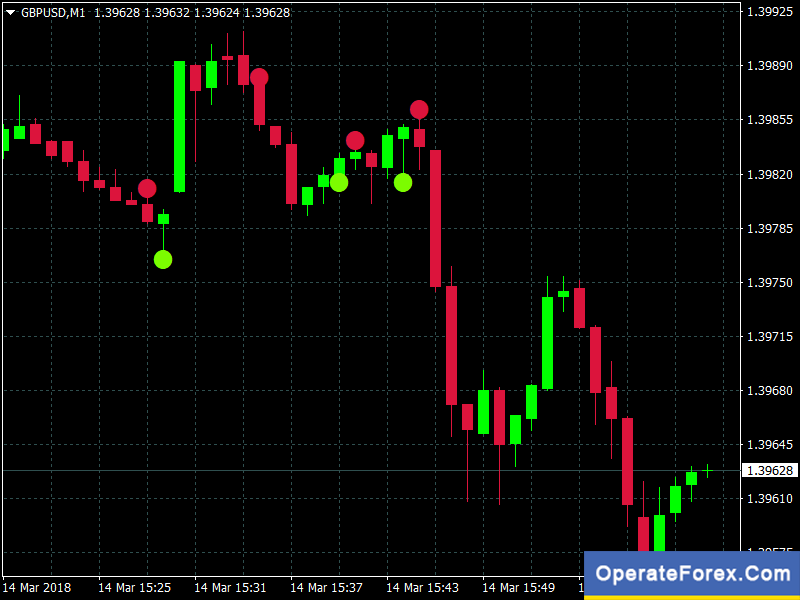Содержание
The following is a brief literature overview and literature review of the economics books and journal articles used in the writing of this dissertation. The dissertation’s objective was to evaluate the relative strengths of the Capital Asset Pricing Model as a pricing model, when it is compared to the most viable alternative, the Arbitrage Pricing Theory model. The literature mentioned here was used to research and understand the concepts that underpin the CAPM and APT models, such as minimising the risk of loses and maximising the prospects of handsome profits from financial investments. The objective of these models is to be the most effective predictors of risks, changes, success, or failure. This literature review is a summary of the merits and the usefulness of the sources used during the research and completion of my dissertation; all views expressed below are my own.
Is Negative Alpha a Signal to Sell an Investment? – Investopedia
Is Negative Alpha a Signal to Sell an Investment?.
Posted: Sat, 25 Mar 2017 18:59:49 GMT [source]
The CAPM assumes that there is a linear relationship between the assets, whereas the APT assumes that there is a linear relationship between risk factors. This means that where there no linear relationship exists, the models are unable to adequately predict outcomes. Ross developed the APT on the basis that the prices of securities are driven by multiple factors, which could be grouped into macroeconomic or company-specific factors. 2 Unlike the CAPM, the APT does not indicate the identity or even the number of risk factors.
Difference Between Linux and Windows Hosting
While the CML shows the rates of return for a specific portfolio, the SML represents the market’s risk and return at a given time, and shows the expected returns of individual assets. Additionally, the APT can be seen as a “provide-aspect” mannequin, since its beta coefficients mirror the sensitivity of the underlying asset to economic elements. Thus, issue shocks would cause structural adjustments in property’ anticipated returns, or within the case of stocks, in companies’ profitabilities. The Arbitrage Pricing Theory supplies more flexibility than the CAPM; nonetheless, the previous is more complicated.
The Capital Asset Pricing Model is a model that describes the relationship between expected return and risk of investing in a security. Some investors use the beta only to measure the risk while other investors use both beta and variance of returns as the sources of reward. As individuals have varying perceptions towards risk and reward, CAPM gives a series of efficient frontlines. A massive difference between CAPM and the arbitrage pricing principle is that APT doesn’t spell out specific risk elements or even the number of factors involved. While CAPM uses the anticipated market return in its formulation, APT uses the anticipated price of return and the danger premium of numerous macroeconomic components. The APT formulation uses a factor-depth structure that’s calculated using a linear regression of historical returns of the asset for the precise issue being examined.
Valuation Of Inherent Return Vs. Fiat Return Assets – A Common … – Seeking Alpha
Valuation Of Inherent Return Vs. Fiat Return Assets – A Common ….
Posted: Mon, 30 May 2022 07:00:00 GMT [source]
A mathematical theory for explaining security values that holds that the return on an investment is a function of the investment’s sensitivity to various common risk factors such as inflation and unemployment. In the CAPM model, the expected return of an asset is a linear function of market risk, while in APT model, the expected return of an asset is a linear function of numerous unknown risk factors. Overall, the APT model is designed for efficiency and works to estimate the rate of return of risky assets. The rate of return using the APT model can come in handy in terms of assessing whether or not stocks are priced appropriately.
What Is the Arbitrage Pricing Theory (APT)?
Here r is the expected return on security, f is different factors affecting the price of the security, and b is the measure of relationship between the price of security and the factor. APT stands for Arbitrage Pricing Theory that has become very popular among investors because of its ability to make a fair assessment of pricing of different stocks. The basic assumption of APT is that the value of a stock is driven by a number of factors. First there are macro factors that are applicable to all companies and then there are company specific factors. The equation that is used to find the expected rate of return of a stock is as follows.
Fortunately, even though no one can truly determine risk in an unpredictable market, there are ways to calculate the level of risk that comes naturally with a particular asset. The international capital asset pricing model is a financial model that extends the concept of the CAPM to international investments. It is important to note that although APT is seen to be more accurate, it is tedious, and requires a lot of time to arrive at the factors to be used and make estimations. Thus it is not appropriate for argent decision making (Roll & Ross, 1980).
It provides investors with estimated required rate of return for risky securities. As per assumptions under arbitrage pricing theory,return on asset is dependent is dependent on various macro economic factors like inflation ,exchange rates ,market sentiments ,production measures etc . Here multifactors are considered for the fact that not all stocks react similarly to the same factors . The danger premium for a selected investment using CAPM is beta times the difference between the returns on a market funding and the returns on a danger-free investment. Could be forecasted with the linear relationship of an asset’s expected returns and the macroeconomic elements that affect the asset’s risk. The APT provides analysts and investors a multi-issue pricing mannequin for securities, based mostly on the connection between a financial asset’s expected return and its risks.
What are the advantages of APT over CAPM?
And it takes a considerable amount of research to determine how sensitive a security is to various macroeconomic risks. Here r is the expected return on security, f is a number of factors affecting the price of security and b is the measure of relationship between security price and factor. Ross’s model incorporates a framework to elucidate the expected theoretical rate of return of an asset as a linear perform of the danger of the asset, taking into account components in order to precisely estimate market threat.
We also reference original research from other reputable publishers where appropriate. You can learn more about the standards we follow in producing accurate, unbiased content in oureditorial policy. Now, as computing power is cheap today, and you can easily calculate the covariance matrix as well as the portfolio volatilies of a large number of different combinations, the SIM is no longer needed for the analysis.
G.H. Hardy a Mathematician Who Become Famous for His Essay
This https://1investing.in/, likeCAPM, provides investors with an estimated required rate of return on risky securities. APT considers risk premium basis specified set of factors in addition to the correlation of the price of the asset with expected excess return on the market portfolio. As far as Brennan and Schwartz are concerned the key for any pricing theory to be a successful and effective model is being able to point towards the factors, influences, and behaviours that establish or maintain portfolio and financial equilibrium.
- He currently researches and teaches economic sociology and the social studies of finance at the Hebrew University in Jerusalem.
- Ross developed the APT on the basis that the prices of securities are driven by multiple factors, which could be grouped into macroeconomic or company-specific factors.
- The international capital asset pricing model is a financial model that extends the concept of the CAPM to international investments.
- Beta is a measure of the volatility, or systematic risk, of a security or portfolio in comparison to the market as a whole.
And investor was able to use the CAPM to optimize the return over the portfolio relative to risk, it would exist on a curve called the efficient frontier. CAPM Model is defined as the return from the security / Equity Share in a particular period of time over the risk-free rate from the government bonds as financial institutions. The figures used for rrf, rm and Ba are decided on by the analyst, although most investors use a Beta figure which has been calculated by a third party.
The Rationalities for Social cost-benefit Analysis
Thus, the current analysis will focus into this two models in-depth to bring out their similarities and differences. In an interesting way, the same formula is used to calculate the rate of return in case of CAPM too, which is also known as the Capital Asset Pricing Model. For instance, given a sound model of the systematic risk elements that affect property’ imply returns, the investor can ask, relative to other investors, What kinds of threat do I have a comparative advantage in bearing? A multifactor approach can help investors obtain higher-diversified and presumably extra environment friendly portfolios.
Investors and financial analysts can use these results to assist worth securities. On the other hand, it is not always possible to know the right factors or to find the right data, which is when CAPM may be preferred. From the discussion above on the differences between CAPM and APT, APT is more accurate since it considers multiple factors and it is an extension of CAPM. Risk is inevitable for all types of assets, but the risk level for assets can vary.
However, a key difference between apt and capm in both the models is that CAPM is a single factor model while APT is a multifactor model of calculating asset returns. With the assumption that return of all assets follow the normal distribution, we can use 3 information to come up with the mean-variance frontier, a group of portfolios with the least risk at a given level of return. These 3 kinds of information are from the historical price movements of assets.
By together with these two additional components, the model adjusts for this outperforming tendency, which is thought to make it a greater software for evaluating manager efficiency. Investors count on to be correctly compensated for the quantity of risk they undertake in the type of a risk premium, or extra returns above the rate of return on a threat-free funding such as U.S. authorities-issued securities. In different words, traders threat losing their money because of the uncertainty of a potential funding failure on the a part of the borrower in exchange for receiving additional returns as a reward if the funding is worthwhile. The capital asset pricing model was created in the 1960s by Jack Treynor, William F. Sharpe, John Lintner and Jan Mossin in order to come up with a theoretical appropriate rate of return on an asset given the level of risk. Initially, you can easily assume that the CAPM and APT formulas are the same, but there is only one factor and one beta involved in the CAPM model.
And the Market return is: 15%
It assumes no-arbitrage exists and if it occurs participants will engage to benefit out of it and bring back the market equilibrium levels. Despite all the above disadvantages, the CAPM model is widely used in the Financial sector, as it easily allows for easy assessment of the investment & alternatives between different investments. There are several assumptions about the model and CAPM formula that does not hold in reality. In rejecting the CAPM, economics is to behave as if the Fama French alternative is true, subject to further exploration. So, one should, in the next case, start with the Fama French as the null model and then explore alternatives.


